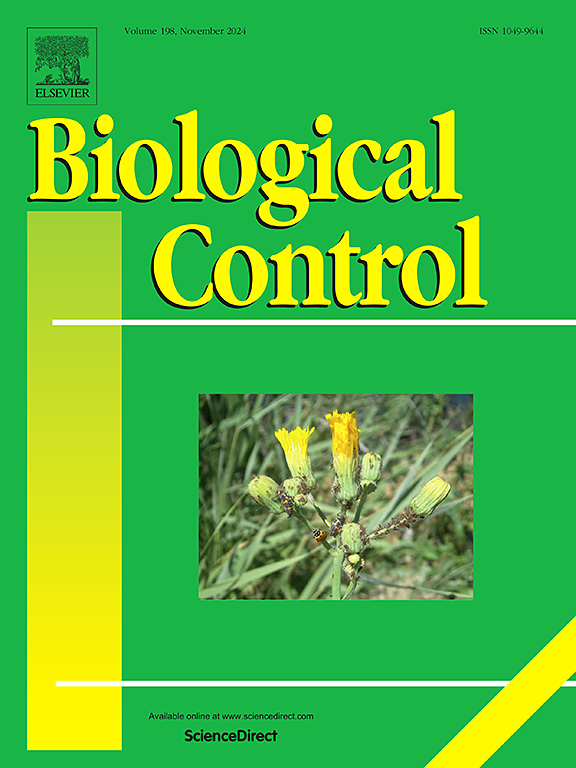Acidomelania saccharicola sp. nov., a new species of dark septate endophytes in Helotiales, with potential of controlling Fusarium wilt of banana
IF 3.4
2区 农林科学
Q2 BIOTECHNOLOGY & APPLIED MICROBIOLOGY
引用次数: 0
Abstract
Banana wilt-like disease, triggered by Fusarium oxysporum, poses a severe threat to banana cultivation as a persistent soilborne pathogen. A strategy to effectively control this disease has yet to be found. Dark septate endophytes (DSEs) fungi have emerged as promising biocontrol agents, not only offering protection against plant pathogens but also enhancing plant growth. Herein, we isolated a novel DSEs species, Acidomelania saccharicola LZ3, from sugarcane (Saccharum officinarum) soil in Liuzhou, Guangxi Province, China. Its classification as a new species was confirmed through morphological characterization and DNA sequence analysis. A. saccharicola LZ3 promoted the growth of banana and inhibited the growth of F. oxysporum by 73.28% in a Petri dish assay, and reduced disease by 52.82% in pots. The average incidence rate of Banana-LZ3 symbionts transplanted into a field highly contaminated with F. oxysporum was 25.93% and the control effect was 53.27%. Inoculation of banana plants with A. saccharicola LZ3 significantly increased polyphenol oxidase (POD) and superoxide dismutase (SOD) activity. This research lays the groundwork for future investigations into A. saccharicola and other DSEs, exploring their potential in sustainable plant disease management.
甘蔗酸霉属暗隔内生菌新种,具有防治香蕉枯萎病的潜力
香蕉枯萎病是由尖孢镰刀菌引发的一种持久性土传病原菌,对香蕉种植构成严重威胁。有效控制这种疾病的战略尚未找到。暗隔内生真菌(Dark - separate endophytes, DSEs)是一种很有前途的生物防治剂,它不仅能保护植物免受病原菌的侵袭,还能促进植物的生长。本研究从广西柳州甘蔗土壤中分离到了一种新的DSEs, Acidomelania saccharicola LZ3。通过形态鉴定和DNA序列分析,确定其属新种。在培养皿试验中,saccharicola LZ3对香蕉生长有73.28%的促进作用,对尖孢镰刀菌的抑制作用为52.82%。香蕉- lz3共生体移栽到尖孢镰刀菌高污染地的平均发病率为25.93%,防治效果为53.27%。接种A. saccharicola LZ3可显著提高香蕉植株多酚氧化酶(POD)和超氧化物歧化酶(SOD)活性。本研究为今后进一步深入研究saccharicola和其他DSEs奠定了基础,探索其在植物病害可持续管理中的潜力。
本文章由计算机程序翻译,如有差异,请以英文原文为准。
求助全文
约1分钟内获得全文
求助全文
来源期刊

Biological Control
生物-昆虫学
CiteScore
7.40
自引率
7.10%
发文量
220
审稿时长
63 days
期刊介绍:
Biological control is an environmentally sound and effective means of reducing or mitigating pests and pest effects through the use of natural enemies. The aim of Biological Control is to promote this science and technology through publication of original research articles and reviews of research and theory. The journal devotes a section to reports on biotechnologies dealing with the elucidation and use of genes or gene products for the enhancement of biological control agents.
The journal encompasses biological control of viral, microbial, nematode, insect, mite, weed, and vertebrate pests in agriculture, aquatic, forest, natural resource, stored product, and urban environments. Biological control of arthropod pests of human and domestic animals is also included. Ecological, molecular, and biotechnological approaches to the understanding of biological control are welcome.
 求助内容:
求助内容: 应助结果提醒方式:
应助结果提醒方式:


